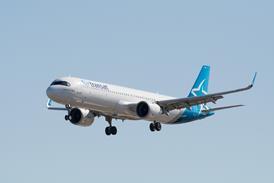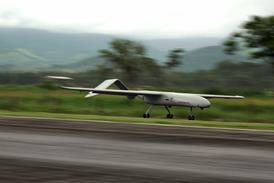LOSS OF control may not be the most frequently occurring type of accident, but when it does occur the outcome is usually catastrophic.
Global airline fatal accident statistics show that LOC in flight kills more passengers and crew than any other accident category, having overtaken controlled flight into terrain many years ago as the biggest killer.
In response to this situation, the UK Civil Aviation Authority, in association with the Royal Aeronautical Society (RAeS) and Flight Safety Foundation, has issued a CD-ROM guide - by pilots, for pilots - entitled Loss of Control: Aircraft Upset Recovery, A User's Guide.
ACCIDENT ANALYSIS
The guide is the result of years of analysis of LOC accidents. It also examines training for stall recovery and upset recovery training for airline pilots because when stalls or upsets occur in normal operation, statistics show recurrent training is simply not effective.
The keys to reducing LOC risk, argues the guide, are pilot knowledge and awareness of the risks, and refocused pilot training. The guide explains: "We should dispense with the common psychological barrier to action represented by the belief that 'it won't happen here', because this is dangerous complacency.
"Anything less than a professional and active training programme is no longer acceptable. To do otherwise would create the conditions that increases risk and could lead to a disaster.
"Training for flight upset should be as much part of a business model as anything else related to training and safe operations."
As well as a video that talks the viewer through upset avoidance, stall recovery and upset recovery procedures, the CD-ROM also contains a PDF document of the RAeS "Aeroplane Upset Recovery Training Aid".
The training aid's primary methodology for raising pilot knowledge and awareness is to present a list of real, fully-identified airline LOC accidents, complete with an account of how each upset developed and why recovery was not achieved.
Also included is a serious upset from which recovery was achieved. This is followed by a description of the aerodynamic phenomena associated with a number of exemplary upset scenarios.
TRAINING AID
The RAeS originally put the training aid together in 2004, but it has since been updated. In 2008, the US National Transportation Safety Board added a supplement - also on the CAA's CD-ROM - following an accident that showed how little familiarity pilots have with the aerodynamics of high-altitude flight - the cruising height at which airliners spend most of their trip time.
The 2009 Air France 447 disaster was an example of this lack of familiarity. But the fact AF447 still happened shows how little heed the industry took of warnings and advice generated by organisations such as the RAeS.
Now, in the absence of action by airlines or regulators to boost recurrent training appropriately, the CAA is trying to put the information directly into the hands of pilots.
Source: Flight International












































